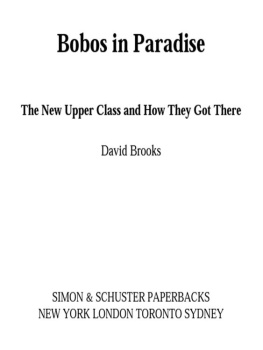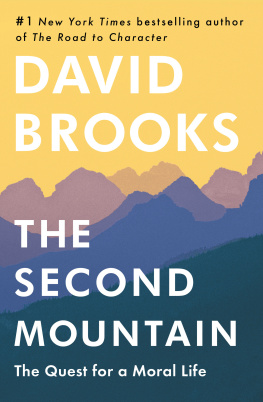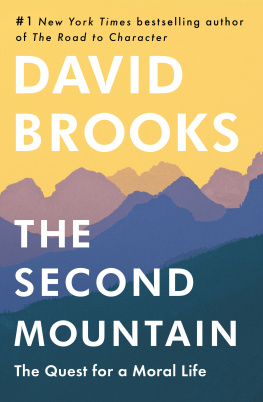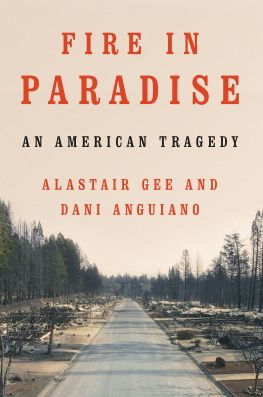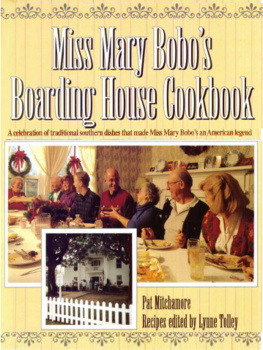David Brooks - On Paradise Drive: How We Live Now (And Always Have) in the Future Tense
Here you can read online David Brooks - On Paradise Drive: How We Live Now (And Always Have) in the Future Tense full text of the book (entire story) in english for free. Download pdf and epub, get meaning, cover and reviews about this ebook. year: 2004, publisher: Simon & Schuster, genre: Art. Description of the work, (preface) as well as reviews are available. Best literature library LitArk.com created for fans of good reading and offers a wide selection of genres:
Romance novel
Science fiction
Adventure
Detective
Science
History
Home and family
Prose
Art
Politics
Computer
Non-fiction
Religion
Business
Children
Humor
Choose a favorite category and find really read worthwhile books. Enjoy immersion in the world of imagination, feel the emotions of the characters or learn something new for yourself, make an fascinating discovery.
- Book:On Paradise Drive: How We Live Now (And Always Have) in the Future Tense
- Author:
- Publisher:Simon & Schuster
- Genre:
- Year:2004
- Rating:3 / 5
- Favourites:Add to favourites
- Your mark:
On Paradise Drive: How We Live Now (And Always Have) in the Future Tense: summary, description and annotation
We offer to read an annotation, description, summary or preface (depends on what the author of the book "On Paradise Drive: How We Live Now (And Always Have) in the Future Tense" wrote himself). If you haven't found the necessary information about the book — write in the comments, we will try to find it.
The author of the acclaimed bestseller Bobos in Paradise, which hilariously described the upscale American culture, takes a witty look at how being American shapes us, and how Americas suburban civilization will shape the worlds future.
Take a look at Americans in their natural habitat. You see suburban guys at Home Depot doing that special manly, waddling walk that American men do in the presence of large amounts of lumber; super-efficient ubermoms who chair school auctions, organize the PTA, and weigh less than their children; workaholic corporate types boarding airplanes while talking on their cell phones in a sort of panic because they know that when the door closes they have to turn their precious phone off and it will be like somebody stepped on their trachea.
Looking at all this, you might come to the conclusion that we Americans are not the most profound people on earth. Indeed, there are millions around the world who regard us as the great bimbos of the globe: hardworking and fun, but also materialistic and spiritually shallow.
Theyve got a point. As you drive through the sprawling suburbs or eat in the suburban chain restaurants (which if they merged would be called Chilis Olive Garden Hard Rock Outback Cantina), questions do occur. Are we really as shallow as we look? Is there anything that unites us across the divides of politics, race, class, and geography? What does it mean to be American?
Well, mentality matters, and sometimes mentality is all that matters. As diverse as we are, as complacent as we sometimes seem, Americans are united by a common mentality, which we have inherited from our ancestors and pass on, sometimes unreflectingly, to our kids.
We are united by future-mindedness. We see the present from the vantage point of the future. We are tantalized, at every second of every day, by the awareness of grand possibilities ahead of us, by the bounty we can realize just over the next ridge.
This mentality leads us to work feverishly hard, move more than any other people on earth, switch jobs, switch religions. It makes us anxious and optimistic, manic and discombobulating.
Even in the superficiality of modern suburban life, there is some deeper impulse still throbbing in the heart of average Americans. That impulse is the subject of this book.
David Brooks: author's other books
Who wrote On Paradise Drive: How We Live Now (And Always Have) in the Future Tense? Find out the surname, the name of the author of the book and a list of all author's works by series.


